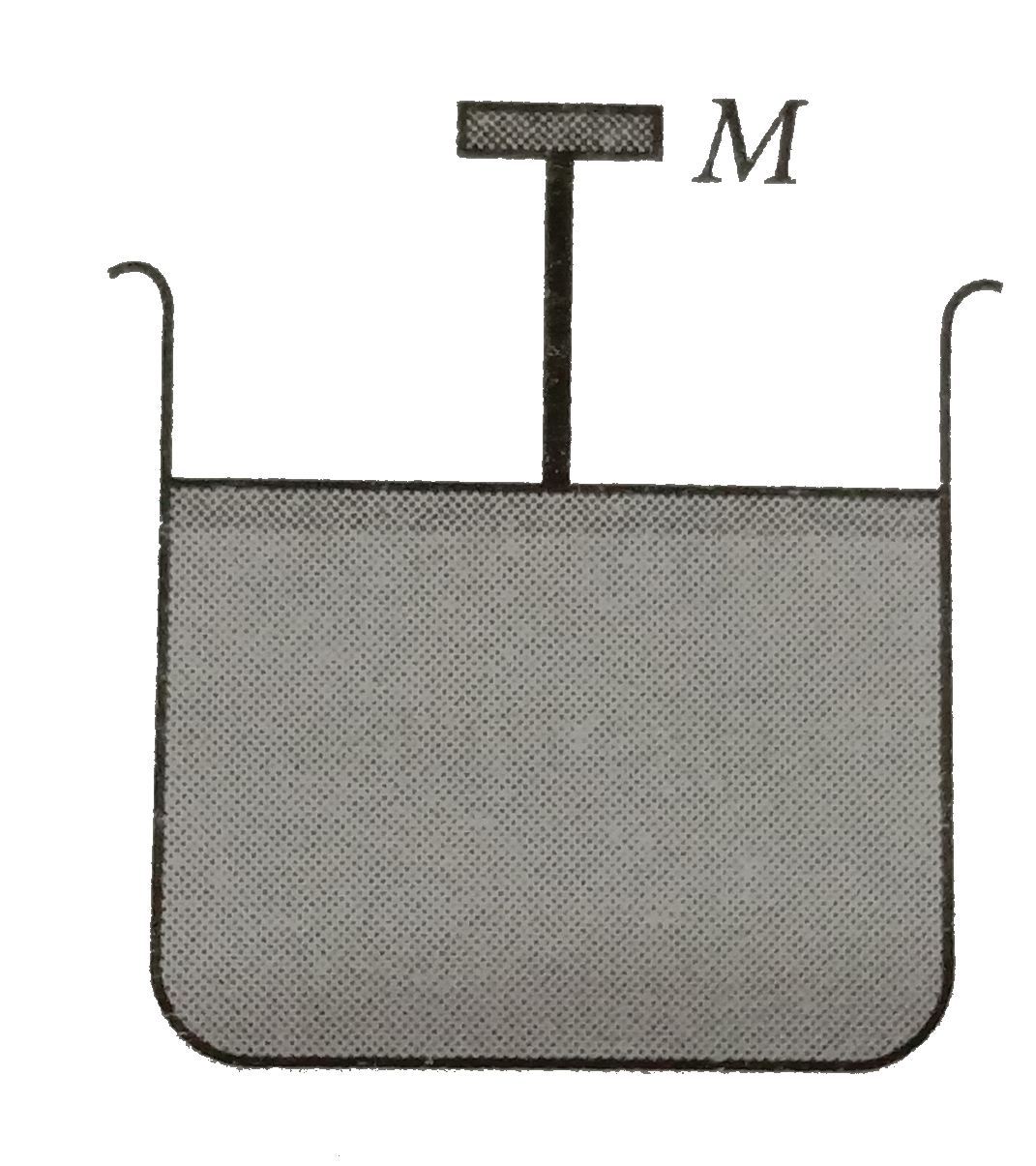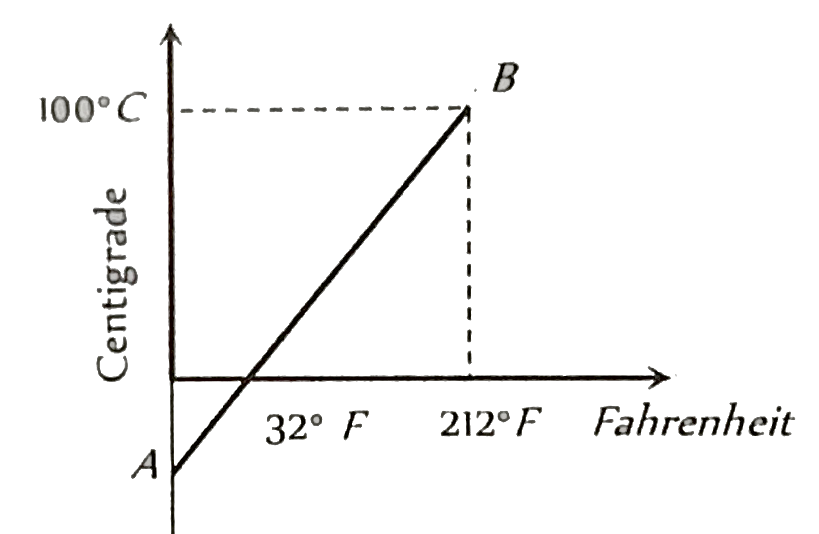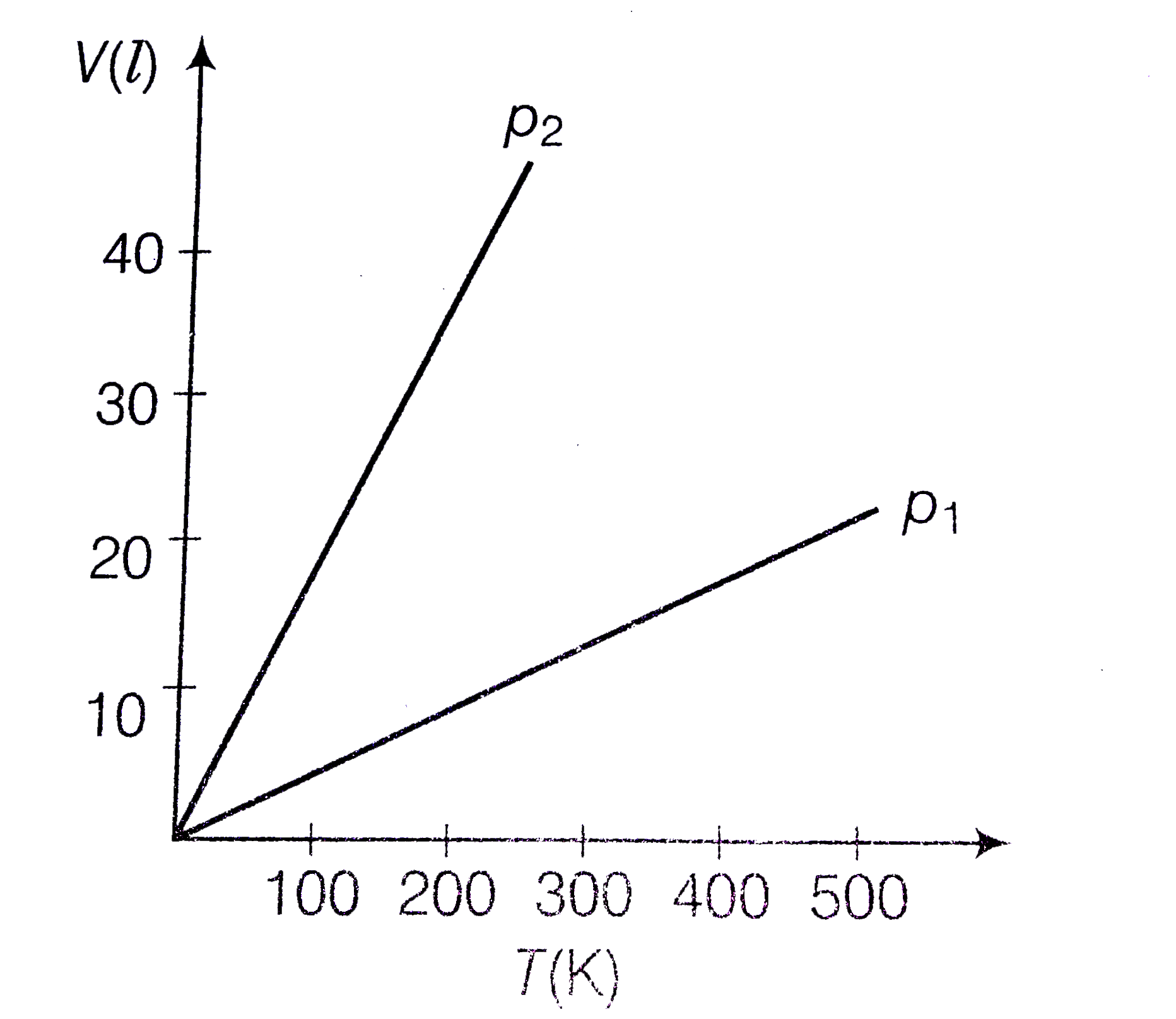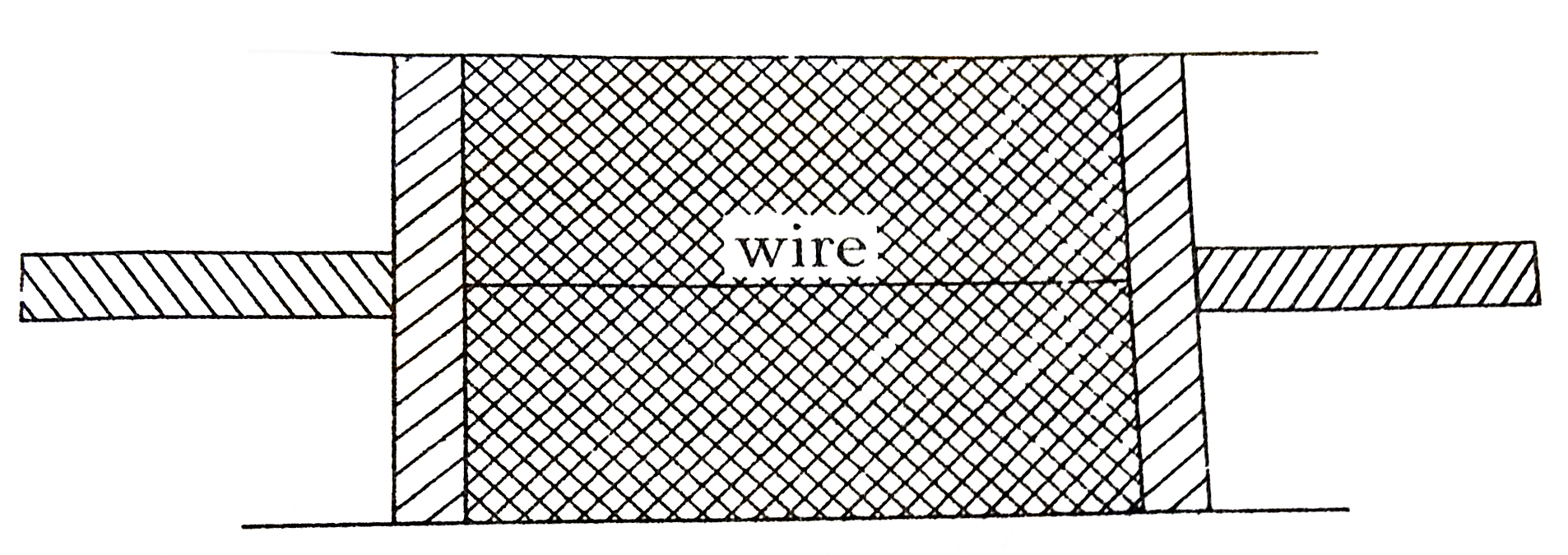Complete Solutions to A Tacking it together of chapter THERMOMETRY THERMAL EXPANSION AND KINETIC THEORY OF GASES of Class 11 book with complete answers and questions
| Class 11 | PHYSICS |
| Chapter | THERMOMETRY THERMAL EXPANSION AND KINETIC THEORY OF GASES |
| DC PANDEY NEET | A Tacking it together |
| Number Of Questions | 55 |
| Academic Year | 2023-24 |
Heat given to a system can be associated with
View SolutionBoyles's Law is applicable for an
View SolutionA cylinder containing an ideal gas is in verticle postion and has a piston of mass M that is able to move up of down without friction. It the temperature is increased,

View SolutionThe absolute zero temperature in Fahrenheit scale is
View SolutionOn which of the following scales of temperature, the temperature is never negative
View SolutionIn a mercury rhermometer the ice point (lower fixed point) is marked as `10^(@)` and the steam point (upper fixed point ) is marked as `130^(@).` At `40^(@)C` tmperature, what will this thermometer read?
View SolutionOn a new scale of tmperature (which is linear) and called the W scale, the freezing and voilling points of water are `39^(@)W` and `239^(@)W,` respectively, What will be the temperature on the new scale, corresponding to a temperature of `39^(@)C` on the Celsius scale ?
View SolutionA Centigrade and a Fahrenheit thermometer are dipped in boiling water. The water temperature is loweres until the Fahrenheit thermometer registers `140^(@)`. What is the fall in temperature as registered by Centigrade thermometer ?
View SolutionA constant volume gas thermometer show pressure reading of 50cm and 99 cm of mercury at `0^(@)C` and `100^(@)C` respectively. When the pressure reading is 60 cm of mercury, the temperature is
View SolutionA metal rod of silver of length `100cm` at `0^(@)C` is heated to `100^(@)C` . It's length is increased by `0.19 cm` . Coefficient of cubical expansion of the silver rod is
View SolutionThe volume of a gas at `20^(@)C` is 100 cm 3 at normal pressure. If it is heated to `100^(@)C` , its volume becomes 125 cm 3 at the same pressure, then volume coefficient of the gas at normal pressure is
View SolutionCoefficient of apparent expansions of mercury is `0.18 xx 10^(-3)//^(0)C`. If the density of mercury at `0^(0)C` is `13.6 g//c c` its density at `473K` will be
View SolutionA clock with a metal pendulum beating seconds keeps correct time at `0^(@)C.` If it loses 12.5s a day at `25^(@)C` the coefficient of linear expansion of metal pendulum is
View SolutionThe graph AB shown in figure is a plot of temperature of a body in degree celsius and degree Fahrenheit. Then

View SolutionIf at same temperature and pressure, the densities for two diatomic gases are respectively `d_(1) and d_(2)` , then the ratio of velocities of sound in these gases will be
View SolutionA gas at the temperature 250 K is contained in a closed vessel. If the gas is heated through 1K, then the percentage increase in its pressure will be
View SolutionAn electron tube was sealed off during manufacture at a pressure of `1.2xx10^(-7)` mm of mercury at `27^(@)C.` Its volume is 100 `cm^(3)`. The number of molecules that remain in the tube is
View SolutionAt what temperature is the root mean square velocity of gaseous hydrogen molecules is equal to that of oxygen molecules at `47^(@)C`?
View SolutionAn ideal gas is initially at temperature T and volume V. Its volume is increased by `DeltaV` due to an increase in temperature `DeltaT,` pressure remaining constant. The quantity `delta=(DeltaV)/(VDeltaT)` varies with temperature as
View SolutionThe given graph shows variation (with distance r form center) of :

View SolutionA chamber containing a gas was evacuated till the vacuum attained was `10^(-14)` m of Hg. If the temperature of the chamber was `30^(@)C,` the number of molecules that remains in it per cubic metre is
View SolutionA bimetallic strip is made of aluminium and steel `(alpha_(Al) gt alpha_("steel"))`. On heating, the strip will
View SolutionA uniform metallic rod rotates about its perpendicular bisector with constant angular speed. If it is heated uniformly to raise its temperature slightly
View SolutionVolume versus temperature graphs for a given mass of an ideal gas are shown in figure. At two different values of constant pressure. What can be inferred about relation between `P_(1)` and `P_(2)` ?

View SolutionAs the temperature is increased, the period of a pendulum
View SolutionAn aluminium sphere is dipped into water. Which of the following is true ?
View SolutionThe radius of a metal sphere at room temperature T is R, and the coefficient of linear expansion of the metal is `alpha`. The sphere is heated a little by a temperature `DeltaT` so that its new temperature is `(T + DeltaT)`. The increases in the volume of the sphere is approximately
View SolutionA cubic vessel (with face horizontal + vetical ) contains an ideal gas at NTP. The vessel is being carried by a rocket which is moving at a speed of `500 ms^(-1)` in vertical direction. The pressure of the gas inside the vessel as observed by us on the ground.
View SolutionThe graph between two temperature scales `A` and `B` is shown in Fig. Between upper fixed point and lower fixed point there are `150` equal divisions on scales `A` and `100` on scale `B`. The relation between the temperature in two scales is given by_
_S01_001_Q01.png)
View Solution1 mole of `H_(2)` gas is contained in box of volume `V= 1.00 m^(3) at T = 300 K`. The gas is heated to a temperature of T = 3000 K and the gas gets converted to a gas of hydrogen atoms. The final pressure would be (considering all gases to be ideal)
View SolutionAn inflated rubber balloon contains one mole of an ideal gas has a pressure p, volume V and temperature T. if the temperature rises to 1.1 T, and the volume is increased to 1.05 V, the final pressure will be
View SolutionA glass vessel of volume `100 cm^(3)` is filled with mercury and is heated from `25^(@)C to 75^(@)C`. What volume of mercury will overflow? Coefficient of linear expansion of glass `= 1.8 xx 10^(-6)//'^(@)C` and coefficient of volume expansion of mercury is `1.8 xx 10^(-4)//'^(@)C`.
View SolutionThe steam point and the ice point of a mercury thermometer are marked as `80^@ and 10^@`. At what temperature on centigrade scale the reading of this thermometer will be `59^@` ?
View SolutionTwo unifrom brass rod A and B of length l and 2l and radii 2r respectively are heated to the same temperature. The ratio of the increase in the volume of A to that of B is
View SolutionThe expansion of an ideal gas of mass (m) at a constant pressure (p) is given by the straight line (B) Then, the expansion of the same ideal gas of mass `2 m` at a pressure `2 p` is given by the straight line.
(##DCP_V03_C20_E01_049_Q01##).
View SolutionThe root mean square velocity of the molecules in a sample of helium is `5//7th` that of the molecules in a sample of hydrogen. If the temperature of hydrogen sample is `0^(@)C`, then the temperature of the helium sample is about
View SolutionAt room temperature, the rms speed of the molecules of a certain diatomic gas is found to be `1930 m//s`. The gas is
View SolutionA ring shaped tube contain two ideal gases with equal masses and molar masses `M_1=32 and M_2=28.`
The gases are separated by one fixed partition P and another movable stopper S which can move freely without friction inside the ring. The angle `alpha` as shown in the figure is ...... degrees.

View SolutionFigure shows two flasks connected to each other. The volume of flask 1 is twice that of flask 2. The system is filled with an ideal gas at temperature 100 K and 200 K respectively in the flasks. In equilibrium if the mass of the gas in 1 be m, then what is the mass of the gas in flask 2.

View Solution1 mole of an ideal gas is contained in a cubical volume V, ABCDEFGH at 300 K as shown in figure. One face of the cube (EFGH) is made up of a material which totally absorbs any gas molecule incident on it. At any given time,

View SolutionA cyclic process 1-2-3-4-1 is depicted on V-T diagram. The p-T and p-V diagrams for this cyclic process are given below. Select the correct choices (more than one options is/are correct)

View Solution
A cyclic process ABCD is shown in the p-V diagram. Which of the following curves represent the same process?
View SolutionFind the average kinetic energy per molecule at temperature T for an equimolar mixture of two ideal gases A and B, where A is monoatmic and B is diamtomic.
View SolutionThe p-T graph for the given mass of an ideal gas is shown in figure. What inference can be drawn regarding the change in volume (whether it is constant, increasing or decreasing) ?
View SolutionA sphere of diameter 7.0 cm and mass 266.5 g float in a bath of liquid. As the temperature is raised, the sphere begins to sink at a temperature of `35^@ C`. If the density of liquid is `1.527 g cm^(-3)` at` 0^@C`, find the coefficient of cubical expansion of the liquid. Neglect the expansion of the sphere.
View SolutionPressure versus temperature graph of an ideal gas of equal number of moles of different volumes is plotted as shown in Fig. Choose the correct alternative.

View SolutionA cylindrical steel plug is inserted into a circular hole of diameter 2.60 cm in a brass plate. When the plug and the plates are at a temperature of `20^(@)C,` the diameter of the plug is 0.010 cm smaller than that of the hole. The temperature at which the plug will just fit in it is
`("Given",alpha_(steel)=11xx10^(-6)C^(-1)and alpha_(brass)=19xx10^(-6)C^(-1)`
View SolutionThe given curve represents the variation of temperature as a function of volume for one mole of an ideal gas. Which of the following curves best represents the variation of pressure as a function of volume?

View SolutionThe mass of hydrogen molecule is `3.32xx10^(-27)` kg. If `10^(23)` hydrogen molecules strikes per second at 2 `cm^(2)` area of a rigid wall at an angle of `45^(@)` from the normal and rebound back with a speed of 1000 `ms^(-1)`, then the pressure exerted on the wall is

View SolutionThe coefficient of apparent expansion of a liquid in a copper vessel is C and in a silver vessel S. The coefficient of volume expansion of copper is `gamma_C`. What is the coefficient of linear expansion of silver
View SolutionTwo identical containers joned by a small pipe initially contain the same gas at pressue `p_(o)` and abosolute temperature `T_(o^.)` One container is now mantained at the same temperature while the other is heated to `2T_(0^.)` The commmon pressure of the gases will be
View SolutionA piece of metal weighs 46 g in air and 30 g in liquid of density `1.24 xx 10^3 kg m^(-3)` kept at `27^0C`. When the temperature of the liquid is raised to `42^0C`, the metal piece weights 30.5 g . The density of the liquid at `42^0 C` is `1.20 xx 10^3 kg m^(-3)`. Calculate the coefficient of linear expansion of the metal.
View SolutionA vertical cylinder closed at both ends is fitted with a smooth piston dividing the volume into two parts each containing one mole of air. At the equilibrium temperature of 320 K, the volume of upper and lower parts are in the ratio 4:1. The ratio of volume will become 3:1 at a temperature of
View SolutionThree rods of equal length are joined to from an equilateral triangle PQR.O is the mid-point of PQ. Distance OR remains same for small change in temperature. Coefficient of linear expansion for PR and RQ is same i.e., `alpha_(2)` but for PQ is `alpha_(1^.)` Then

View SolutionA cylindrical tube of uniform cross-sectional area A is fitted with two air tight frictionless position. The pistons are connected to each other by a metallic wire. Initially the pressure of the gas is `p_(o)` and temperature is `T_(o),` atmospheric pressure is also `p_(o)` Now the temperature of the gas is increased to `2T_(0),` the tension in the wire will be

View Solution
A Tacking it together questions and complete solutions for chapter THERMOMETRY THERMAL EXPANSION AND KINETIC THEORY OF GASES of DC PANDEY ENGLISH of Class 11